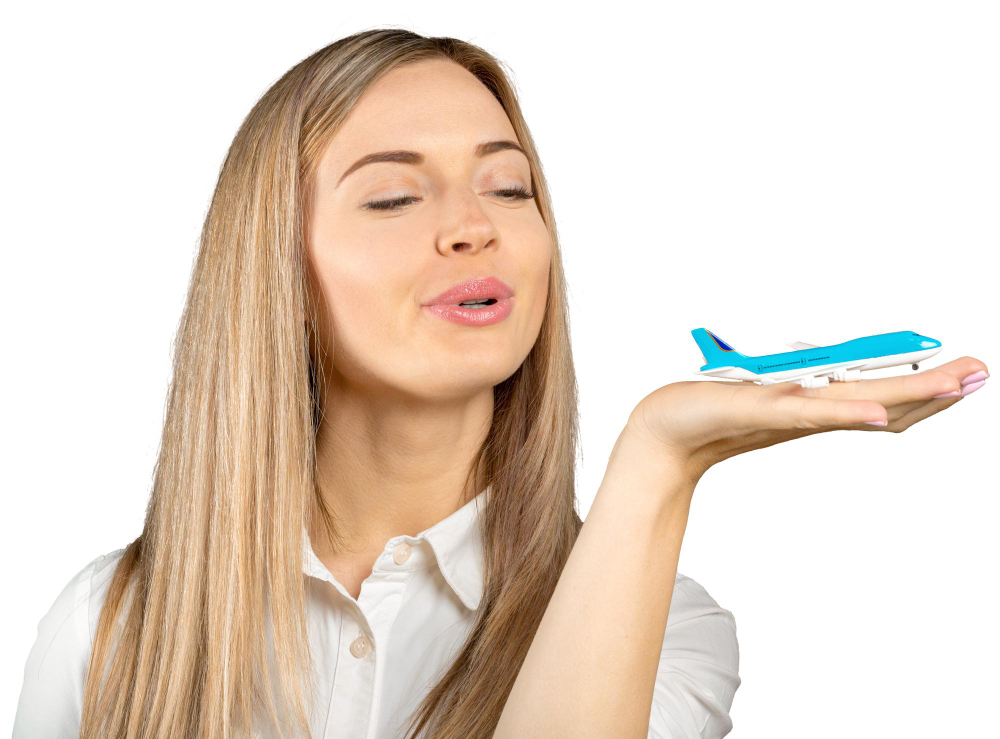When it comes to packing for air travel, most travelers focus on the big items—laptops, liquids, chargers, and clothing. Yet smaller everyday essentials, like an electric toothbrush, often raise last-minute questions. Can you bring it on an airplane? Will airport security stop you for having batteries inside?
Electric toothbrushes are a common travel companion for those who value convenience and oral hygiene. However, because they contain electrical components and sometimes lithium batteries, many travelers wonder whether they belong in checked luggage or a carry-on.
This guide provides a clear explanation of the Transportation Security Administration (TSA) rules, airline regulations, and helpful packing tips to make sure your next trip goes smoothly.
TSA’s General Rule for Electric Toothbrushes
The good news is that yes, you can bring an electric toothbrush on an airplane. TSA allows passengers to carry both manual and electric toothbrushes in either carry-on or checked luggage. However, the details depend on the type of battery your toothbrush uses.
TSA’s primary concern is battery safety, not the toothbrush itself. Batteries that pose a fire risk—such as lithium-ion batteries—must be handled carefully and are subject to certain restrictions. This means understanding what powers your toothbrush is essential before you pack.
Understanding Battery Types in Electric Toothbrushes
Electric toothbrushes generally come with one of three types of power sources: rechargeable lithium-ion batteries, replaceable AA or AAA batteries, or plug-in models that use no internal battery.
- Rechargeable lithium-ion batteries are found in most high-end toothbrushes like Philips Sonicare or Oral-B iO. These can stay in your carry-on bag, but it is recommended not to place them in checked luggage due to fire risk.
- Replaceable battery toothbrushes using AA or AAA batteries are less regulated. They can go in either bag without issue.
- Plug-in models without internal batteries are the simplest and pose no risk, making them easy to pack anywhere.
Knowing which category your toothbrush falls into helps you comply with TSA and airline guidelines while keeping your belongings safe.
Carry-On vs. Checked Baggage: Where to Pack It
TSA and most airlines recommend placing your electric toothbrush in your carry-on rather than checked luggage. The main reason is safety. Lithium-ion batteries can potentially overheat and catch fire, and such incidents are easier to handle in the cabin than in the cargo hold.
In addition, carrying your toothbrush onboard ensures it doesn’t get damaged or lost if your checked bag is delayed. If you’re using replaceable batteries, remove them before packing to avoid accidental activation.
If you do pack your toothbrush in checked luggage, make sure it is well protected and turned off completely.
International Travel and Airport Security
If you’re traveling internationally, it’s important to remember that not all countries follow TSA guidelines exactly. However, most international aviation authorities—such as those in the European Union, Canada, and Australia—have similar rules regarding personal electronics and lithium batteries.
When flying abroad, check the specific airline’s policy before your trip. Some countries may limit the number or size of spare batteries you can bring in your carry-on. It’s also wise to carry your toothbrush charger or USB cable in your hand luggage in case security officers want to inspect it.
How to Pack Your Electric Toothbrush for Air Travel
Proper packing helps prevent damage and ensures quick passage through airport security. Here are some easy steps for safe packing:
- Keep it clean and dry: Before travel, make sure your toothbrush is clean and completely dry to prevent moisture buildup.
- Use a protective case: Store it in a travel case or pouch to avoid accidental activation and to keep it hygienic.
- Detach the brush head: Removing the head prevents pressure damage and saves space in your bag.
- Avoid accidental power-on: Most toothbrushes have a power button that could get pressed in transit. Use a case with a hard shell or tape the button if necessary.
- Keep chargers and cables organized: Store them in a separate pouch to prevent tangling or damage.
Following these steps will make your travel experience smoother while keeping your toothbrush ready for use upon arrival.
What the TSA Says About Spare Batteries
If you’re bringing extra rechargeable batteries for your toothbrush, TSA rules become stricter. Spare lithium-ion batteries must only be packed in carry-on luggage. They should never be placed in checked bags.
To prevent short circuits, keep the battery terminals covered or store them in their original packaging. If the battery capacity exceeds 100 watt-hours (which is rare for toothbrushes), you may need airline approval.
For most travelers, however, spare toothbrush batteries are small and fall well below the limit. As long as they are properly protected, you will not have any issues at airport security.
Traveling with Chargers and Accessories
Your electric toothbrush is useless without its charger, so bringing it along is just as important. Most modern toothbrush chargers are travel-friendly and automatically adjust to different voltages (from 110 to 240 volts). This means they work in most countries with only a plug adapter.
If your toothbrush uses a charging stand or wireless dock, consider wrapping it separately to prevent scratches or breakage. For USB-compatible toothbrushes, carry a spare cable in your travel pouch.
Avoid packing large charging stations or glass rinsing cups, as they can be fragile and may take up unnecessary space in your luggage.
Common Misconceptions About Electric Toothbrushes and Air Travel
There are several myths about flying with electric toothbrushes that often confuse travelers:
- Myth 1: Electric toothbrushes are not allowed in carry-on bags.
This is false. They are completely allowed as long as battery rules are followed. - Myth 2: TSA will confiscate your toothbrush because it vibrates.
Also false. The TSA understands that these are personal care items. Just make sure it’s turned off. - Myth 3: You can’t pack an electric toothbrush with liquids.
You can. Just ensure any toothpaste or mouthwash complies with the 3.4-ounce liquid rule for carry-ons.
Understanding the truth behind these myths will help you pack confidently and avoid unnecessary stress at security checkpoints.
Tips for Using an Electric Toothbrush While Traveling
Traveling doesn’t mean compromising on your oral hygiene routine. Here are a few helpful tips for keeping your smile bright wherever you go:
- Charge before departure: Fully charge your toothbrush before you leave. Many models last one to two weeks on a single charge.
- Pack travel-sized toothpaste: TSA allows toothpaste under 3.4 ounces in carry-ons.
- Use a travel case: Protect your toothbrush from dirt and germs during the trip.
- Bring a manual backup: If your electric toothbrush runs out of power or breaks, a small manual toothbrush can be a lifesaver.
- Adapt to local voltage: Always check voltage compatibility if traveling internationally to prevent charger damage.
With these habits, maintaining good oral hygiene during flights and hotel stays becomes easy and stress-free.
Conclusion
So, can you bring an electric toothbrush on an airplane? The answer is a clear yes. TSA and airlines allow electric toothbrushes in both carry-on and checked luggage, though carrying them in your hand luggage is safer—especially if they contain rechargeable batteries.
Understanding the type of battery your toothbrush uses, following TSA battery guidelines, and packing it properly will help you breeze through security with confidence.
Traveling should never come at the cost of personal comfort and hygiene. By preparing your toothbrush and accessories correctly, you can enjoy the convenience of clean teeth wherever your journey takes you. Whether you’re flying across the country or around the world, Watson’s golden rule for travelers applies here: pack smart, fly safe, and smile bright.
FAQs
1. Can I pack my electric toothbrush in my carry-on bag?
Yes. TSA allows electric toothbrushes in carry-on bags. It’s actually recommended, especially for models with rechargeable lithium-ion batteries.
2. Are electric toothbrushes allowed in checked luggage?
Yes, they are allowed, but it’s better to keep them in your carry-on if they contain rechargeable batteries to avoid potential overheating issues.
3. Do I need to remove the batteries from my electric toothbrush before flying?
If your toothbrush uses replaceable AA or AAA batteries, it’s a good idea to remove them to prevent accidental activation. For built-in rechargeable batteries, ensure the device is turned off.
4. Will TSA inspect my toothbrush at security?
Usually not. Electric toothbrushes are common personal items and rarely trigger alarms. However, TSA officers may inspect it if it looks unusual on the scanner.
5. Can I use my electric toothbrush during the flight?
Yes, you can. Most airlines allow small electronic grooming items like toothbrushes. Just be mindful of your seatmates and use it discreetly in the lavatory if needed.
Also read: Citrus Energy Drink: Refreshing Way to Boost Focus and Performance




Leave a Comment